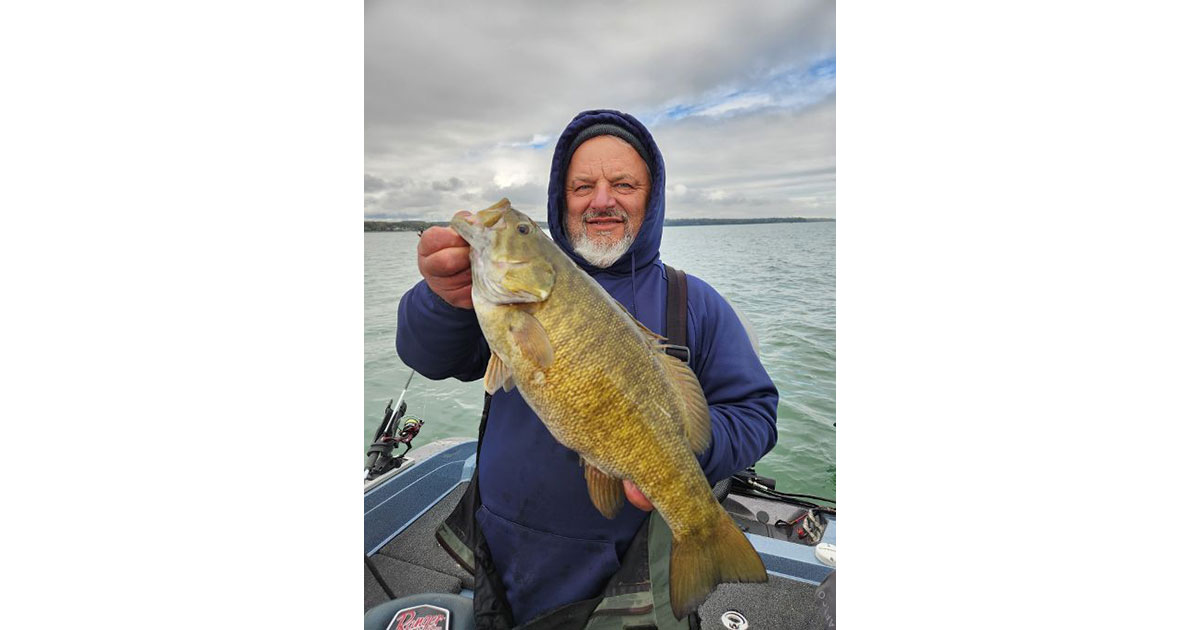- Details
St. Croix Report

What’s so great about the post-spawn? It’s a recuperation period. Bass are hungry and rapidly becoming more aggressive. But it’s also a relocation period, which means the locations where post-spawn bass may be found can change from day to day. Thankfully, while post-spawn bass locations are variable, they are also highly predictable.
Post-Spawn Behavior
Think of post-spawn largie behavior like this: All post-spawn bass are eager to feed, but there are two primary things going on. Most male bass engage in a distinct fry-guarding ritual for about a week or ten days immediately following the hatch.
Meanwhile, the females are immediately out, abandoning their spawning sites – and their baby daddies – headed back towards deeper water. Once the neurotic males abandon their posts (often after snapping and devouring a good percentage of their own offspring), they may follow the same basic routes offshore as the females. The whole post-spawn transition usually lasts around a month.
- Details
St. Croix Report

There’s a lot to love about smallmouth bass. They’re widely dispersed and available, generally cooperative in eating, and bend the heck out of a fly rod.
Among fly anglers, smallmouth bass have near universal appeal. Their abundance and eagerness make them an ideal teaching species – providing beginning fly fishers with ample and fun practice in making presentations, setting the hook, and fighting fish. Without question, smallmouth are a gateway drug, delivering experience, confidence, and dopamine that fuel the fly-fishing journey and kick open the doors to trout, steelhead, saltwater, and other fly-fishing pursuits. Meanwhile, their spunk and trophy potential keep the species top-of-mind with advanced fly anglers as well, if not a full-on addiction.
Such is the case with 35-year-old James Hughes, head guide for Ypsilanti, Michigan-based Schultz Outfitters. For Hughes, the bulk of his nearly 200 days a year on the water is occupied in pursuit of smallmouth bass. His season begins as early as February and ends in October when upland bird hunting – and his two English setters – command his attention.
Hughes plies a variety of bass waters throughout the spring season, which is an important asset, as key variables complicate spring fishing – so much so, that many fly anglers write off smallmouth until the complexities of spring weather and the spawn disappear totally. Unbroken time on the water and access to diverse fisheries, however, helps Hughes make the best day-to-day decisions with respect to weather, flows, water temperature, water clarity, and spawning cycles.
- Details
Seaguar Report

Sometimes, you have to go deep if you want to catch a football-sized smallmouth. Deep water structure are places where many big smallmouth live much of the year if the conditions align, and fishing deep is a great way to catch the fish of a lifetime.
Television host and bass fishing personality Mark Zona and prominent smallmouth specialist and guide New York's Capt. Joe Fonzi each spend plenty of time in deep water when searching for the biggest fish in the lake.
They each have a specific approach to targeting deep water, with everything from the tackle and gear used to where they look having a purpose. While much of their focus is on the Great Lakes, the key themes will apply to catching smallmouth anywhere.
When to Go Deep
Zona spends much of his time filming Zona's Awesome Fishing Show throughout the Great Lakes region, and fishing deep is nearly always a part of the plan. There are a few exceptions, but often, he chases suspended bass in deep water or fishes right along the bottom where big smallmouth live.
"From ice out until the water gets to be around 50 degrees, you can find a good amount of fish hugging the bottom from 20 to 50 feet deep," he said. "Then they come up and do their business and head right back out but tend to suspend a lot more. The prime times to catch them in deep, clear water on the bottom are early in the year, then late summer, and again in the late fall. Those breaks between seasons are when I concentrate on shallower water or suspended bass out deep, which is a different subject."
Fonzi, who spends much of his time guiding clients with his Thumbs Up Guide Service on the Eastern Basin of Lake Erie, is nearly always in deep water regardless of the season.
"Ever since zebra mussels became prevalent and cleared up the lake years back, our water has gotten much clearer," Fonzi began. "Now fish can stay deep all year and spawn in water as deep as 30 feet. A certain percentage of fish, not all, but especially the biggest fish, will spawn in the deepest water that sunlight can hit."





